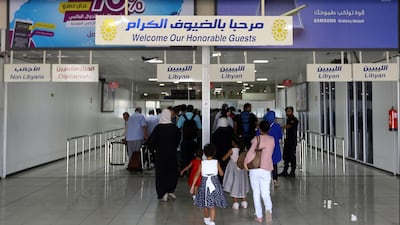The Libyan capital Tripoli has seen the breakdown of a week-long ceasefire after an upstart militia launched artillery shells areas near to the city's only functioning airport.
The shelling likely came from a group known as the 7th Brigade or the Kaniyat, who initiated the devastating clashes that killed 63 people in Tripoli earlier this month. They hail from the town of Tarhuna, 40 miles south-east of the centre of Tripoli and its leaders are largely from the same family, with the surname of Kani.
They say they want to rid Tripoli of corruption and the state-sanctioned militias that plague the capital and operate with impunity. In a statement yesterday the 7th Brigade insisted they had no ideological or political agenda and simply wanted to liberate Tripoli from “gangs.” The 7th Brigade were previously incorporated into the defence ministry, but the UN-backed government have since said they relinquished all ties in April 2018.
Sources within the pro-government brigade controlling the airport, known as Rada, confirmed the incident but insisted no objects hit any planes nor did they fall inside the perimeter fence. No one was killed although at least three people were believed to be lightly injured. Flights to the airport, known as Metiga, were redirected to the city of Misrata.
There was no direct hand to hand combat and the shelling died down early on Wednesday morning in the area of Abu Salim. No group has directly claimed responsibility, but it underlined the fragility in Tripoli as competing groups, most of whom nominally operate under the UN-backed government , fight for territory and the rewards that come with it.
Complicating matters is the arrival of notorious militiaman Salah Badi and loyalists of his Samoud battalion. They have also tried to oust the Tripoli cartel of militias. During the 2011 revolution Badi was a senior commander of a rebel unit from Misrata when the city was surrounded by the army of former dictator Muammar Gaddafi.
However, in 2014 he was a key figure in the Islamist coalition known as Libya Dawn, that raised Tripoli’s airport to the ground and seized the city for a couple of years. Badi had been staying in Turkey but returned to stir up trouble. Some blame him for facilitating the extremist group Ansar Al-Sharia, many of who defected to ISIS in 2015.
The Kani-Badi coalition have repeatedly clashed with pro-government militias in Tripoli this month. Controlling the capital’s sole functioning airport is a Salafist group known as the Special Deterrence Force or Rada. Operating under the interior ministry, they control a prison holding some 2,500 men. These include common criminals, members of ISIS and the brother of the Manchester bomber Hashem Abedi. They see themselves as an anti-terrorism unit.
_______________
Read more:
Rockets fired at Libya capital's only working airport
ISIS claims Libyan oil headquarters attack
Libyan commander Khalifa Haftar calls Italians 'enemies'
_______________
Rada work with a smattering of nominally pro-government militias known as the Tripoli Cartel. All are accused of corruption and extortion. The most powerful group is called the Tripoli Revolutionaries Brigade, who were heavily involved in the clashes at the start of the month. There are repeated rumours that their leader, Haithem Tajouri, has met with officials from the Libyan National Army, which opposes the UN-backed government and is based in Benghazi, in Saudi Arabia and the UAE to try and negotiate a settlement.
Perhaps the most hated Tripoli Cartel militia leader is Abdul Ghani ‘Ghneiwa’ al-Kikli who is leader of the Abu Salim Central Security. He and his troops are regarded as particularly violent and brutal. The final major faction of the Tripoli Cartel is the Nawassi, who run the capital’s most densely populated area, Souq Al-Juma and are also Salafist-leaning.


